KEY POINTS:
1. APEC growth moderates in Q1 2025 as elevated uncertainty and geopolitical headwinds dampened demand, with early trade gains providing only temporary support.
2. Merchandise trade registers solid growth in Q1 2025 from frontloaded shipments ahead of anticipated restrictive measures, but momentum may ease as transitory factors fade.
3. APEC stands to benefit from advances in artificial intelligence, but uneven digital capacity and skills gaps may constrain broader adoption and productivity.
4. Greenfield investments in APEC remain resilient, driven by the shift toward strategic and high-growth sectors amid digitalisation and structural transformation.
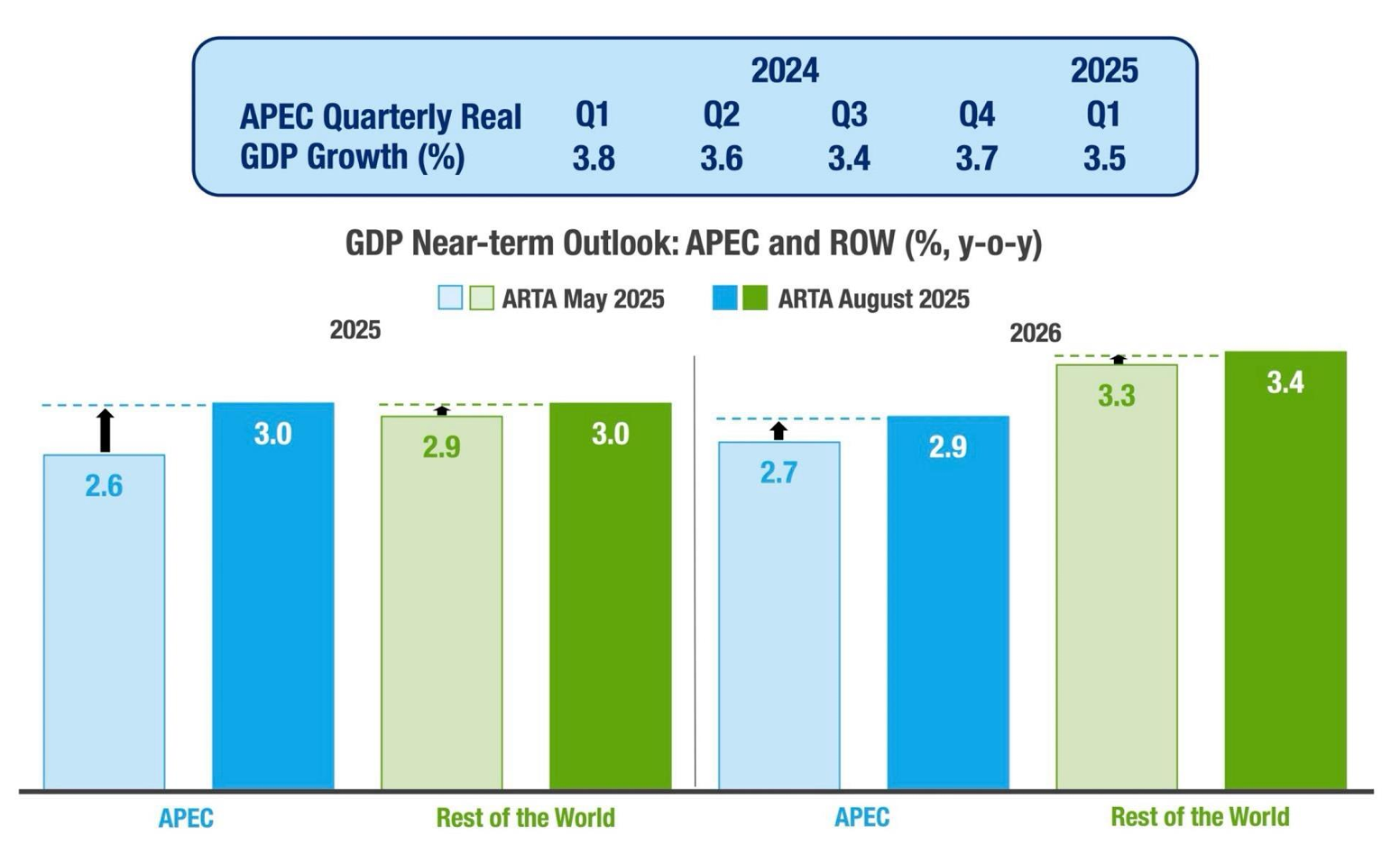
APEC growth slows in Q1 2025 as global uncertainty and headwinds weigh on demand; frontloaded trade gains lift growth prospects but lack momentum.
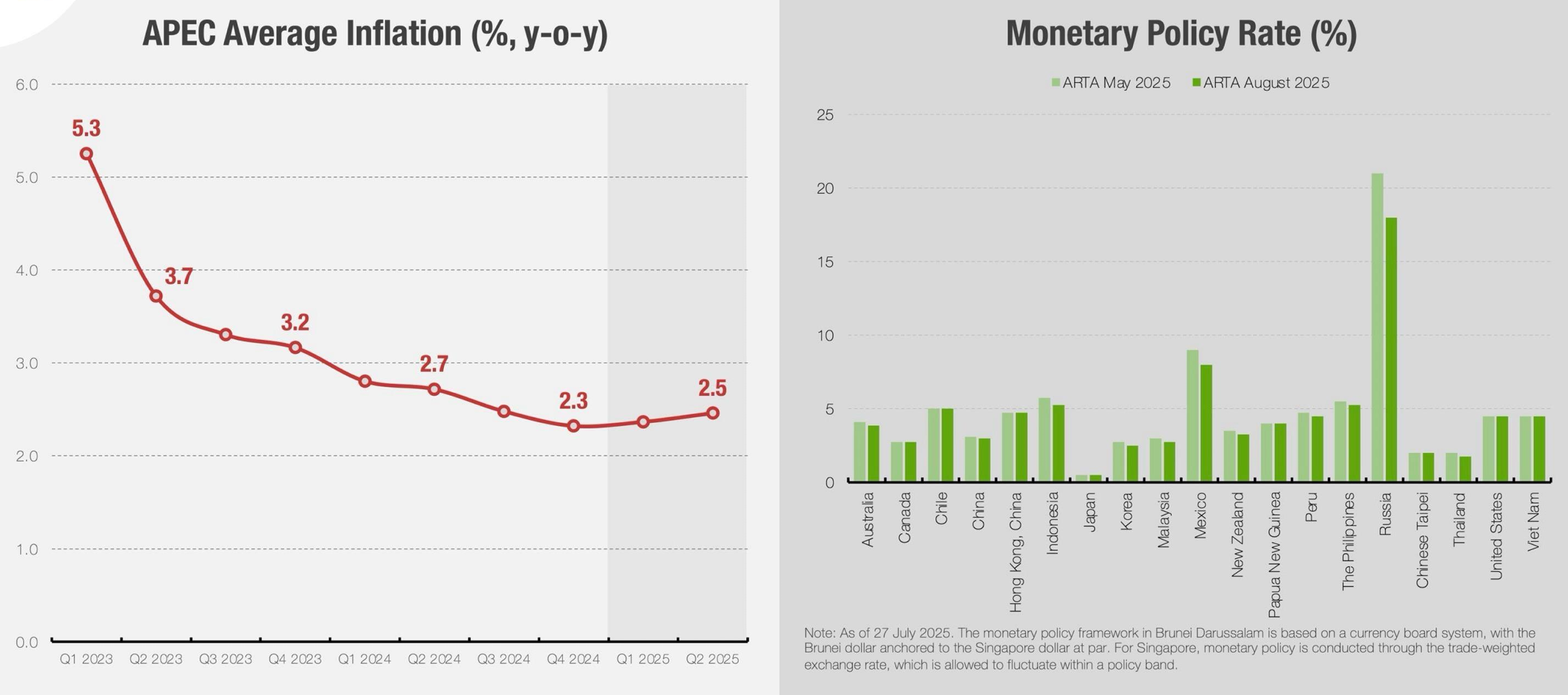
As inflation stays low, central banks have either reduced or kept policy rates steady to support growth amid global challenges, while keeping an eye on potential pressures.
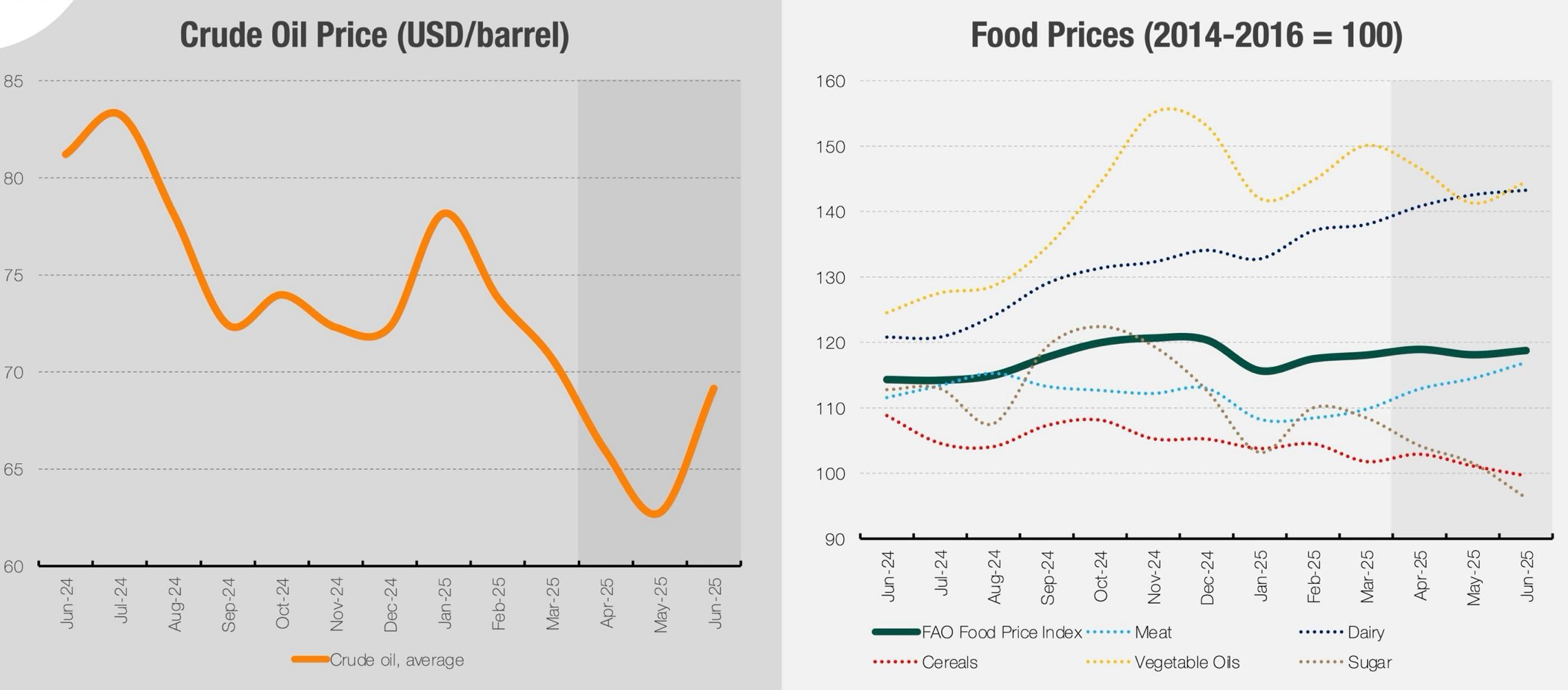
Crude oil prices inch up on geopolitical instability, while food prices remain broadly stable despite mixed trends across key commodity groups.
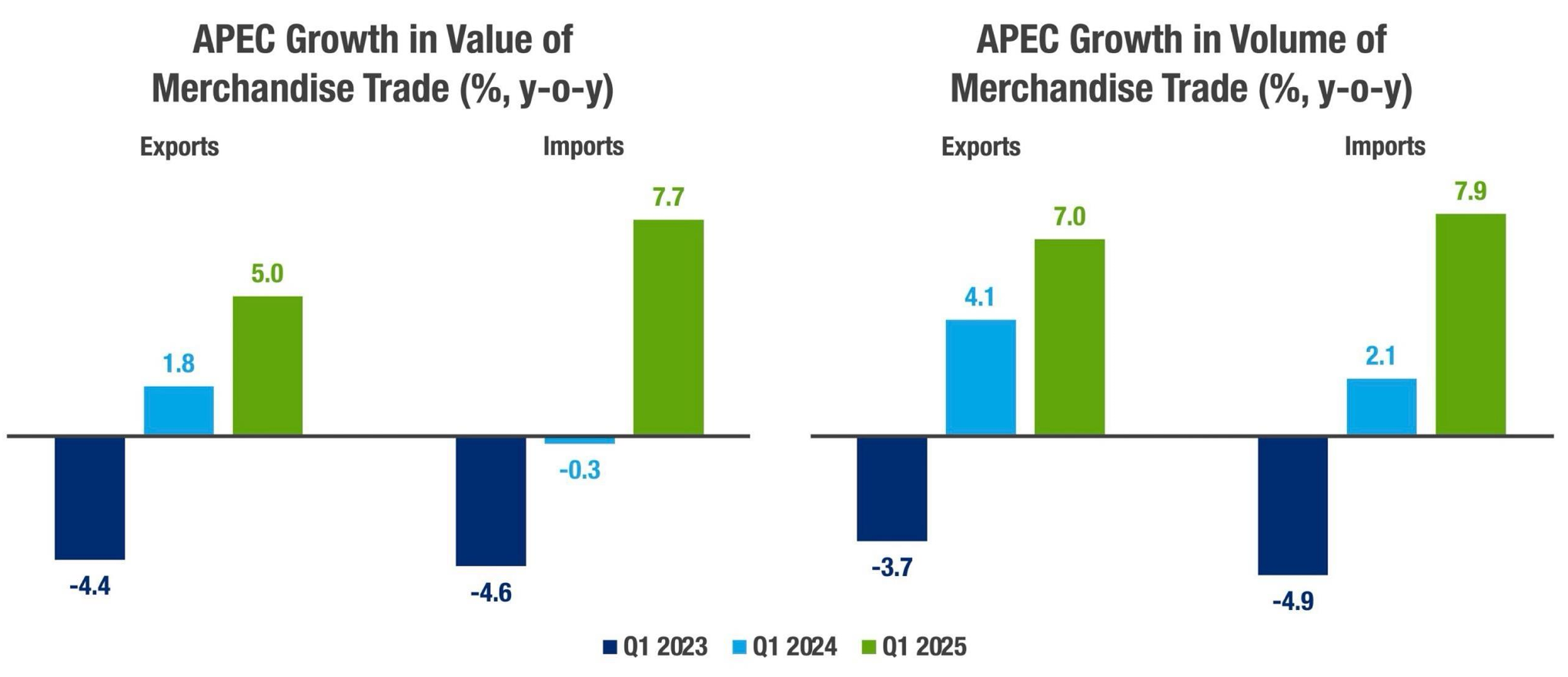
Merchandise trade posts strong early-year growth on frontloaded shipments ahead of anticipated restrictive measures, but momentum is fragile and reliant on policy shifts.
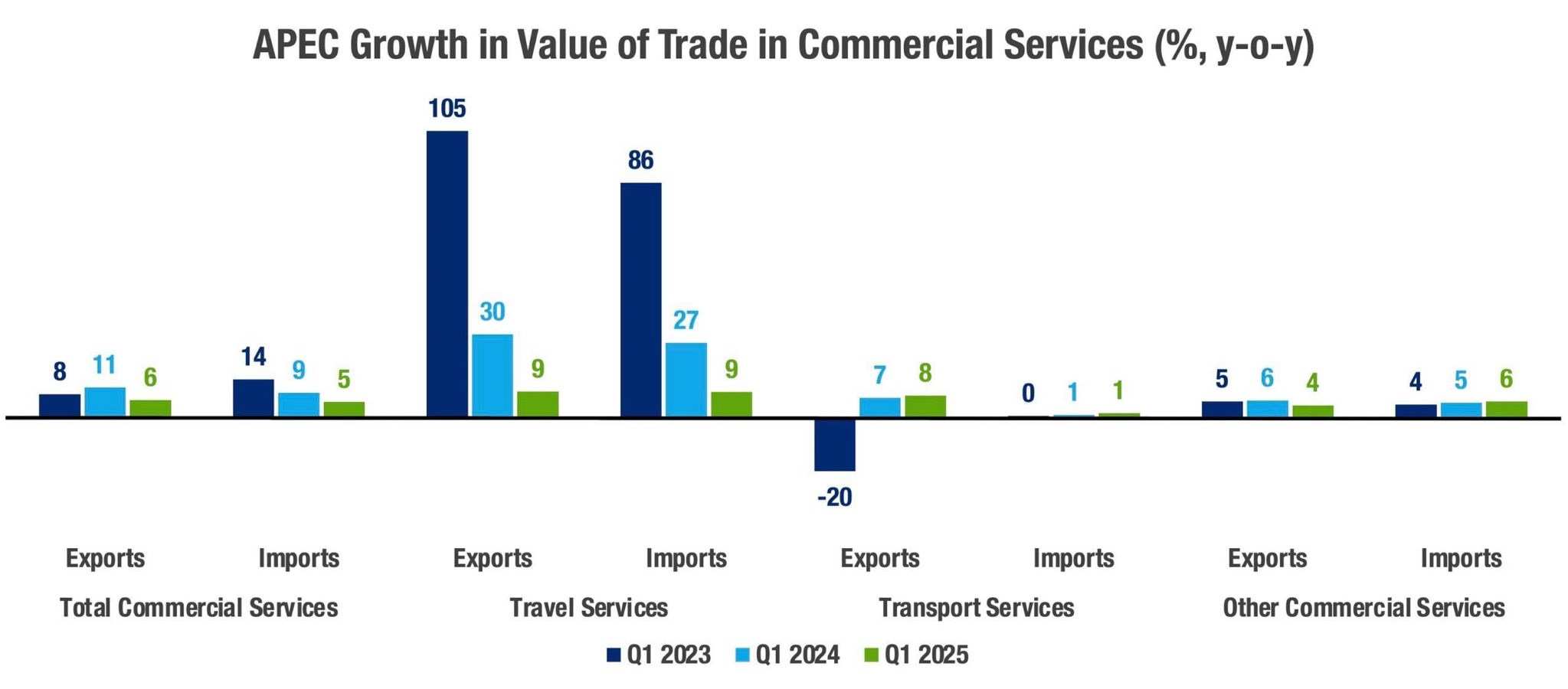
Services trade moderates, dragged down by declining travel flows and contractions in major sectors amid elevated uncertainty.
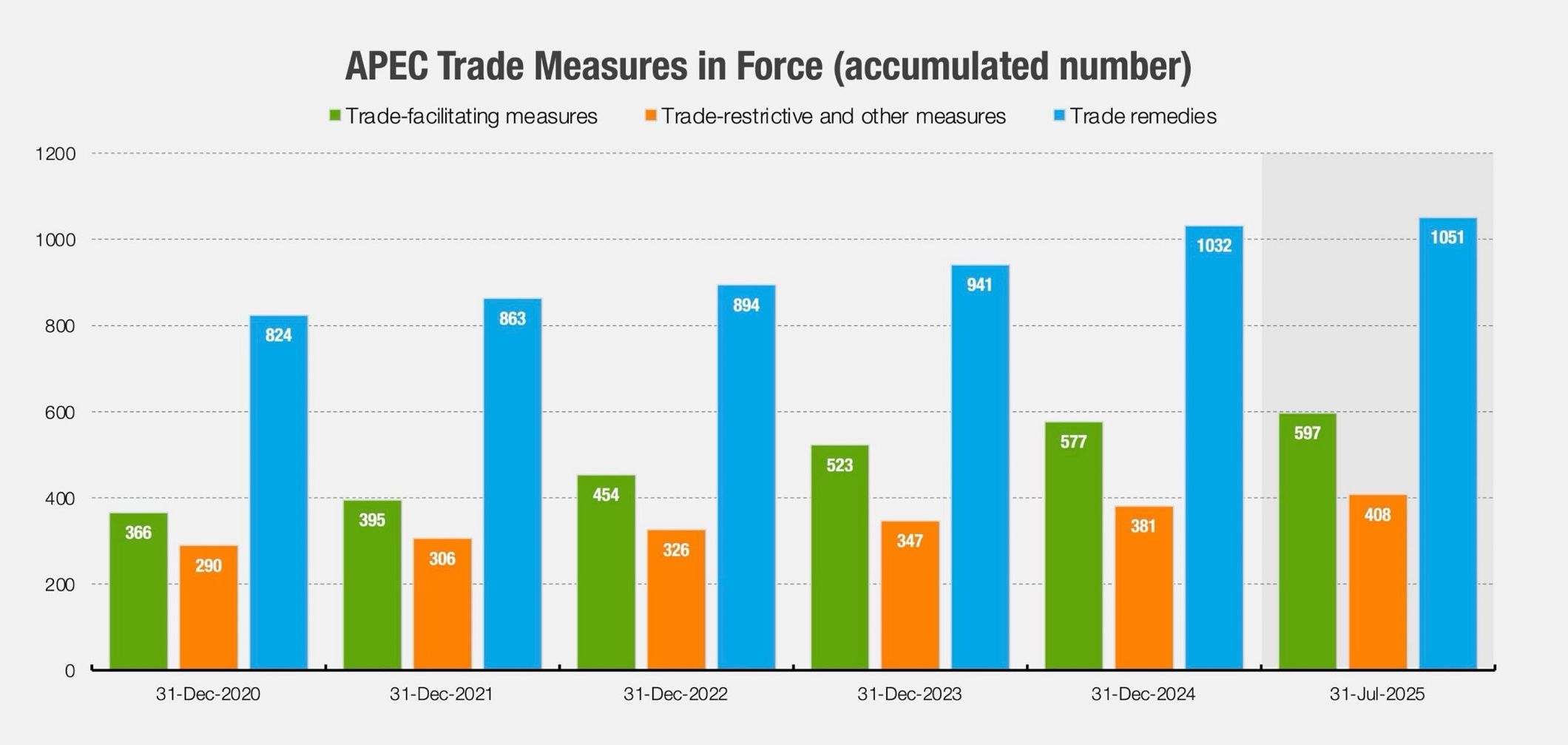
Trade-facilitating efforts continue, but the sustained increase in restrictive measures and remedies reflects perceived imbalance in trade relationships and practices.
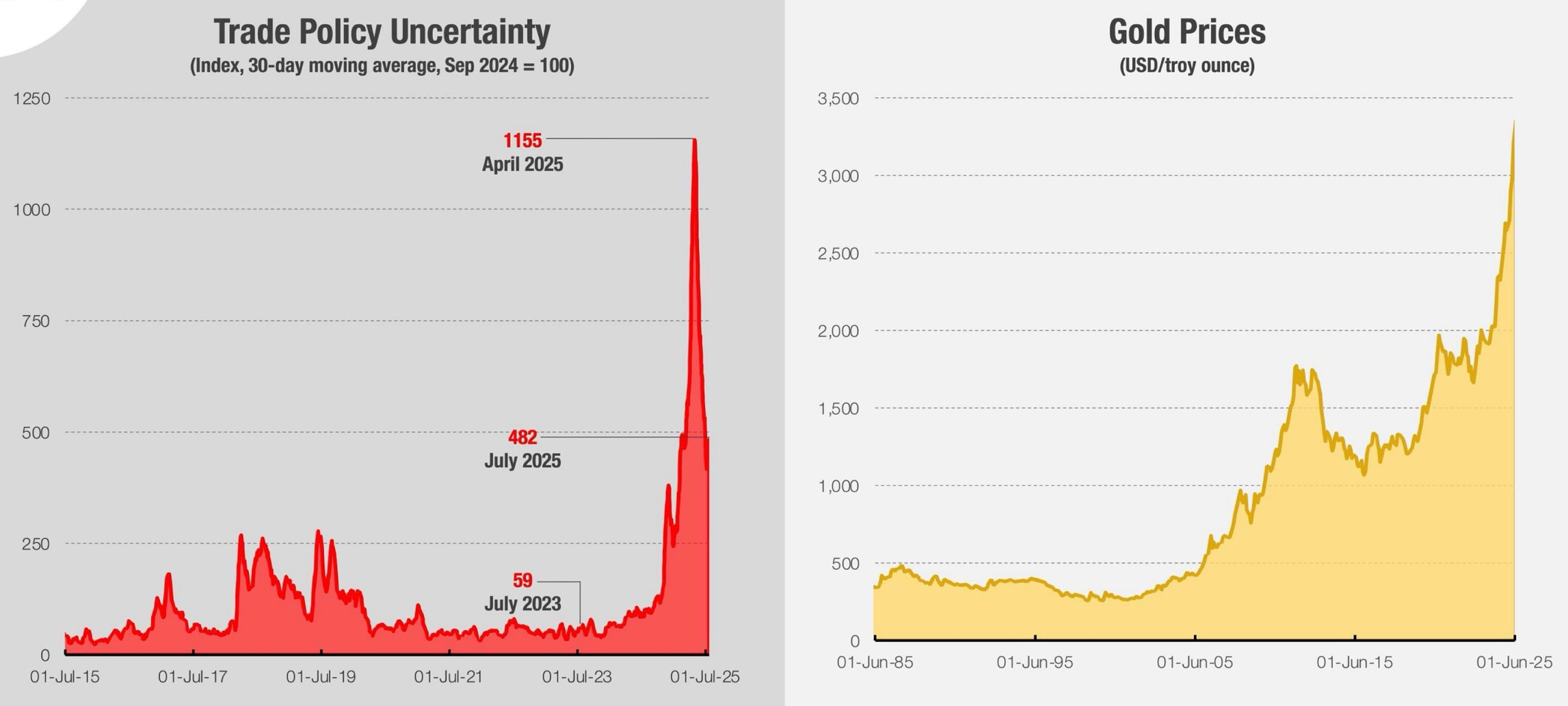
Trade policy uncertainty, easing from recent peaks, remains a key risk, sustaining demand for safe-haven assets such as gold.
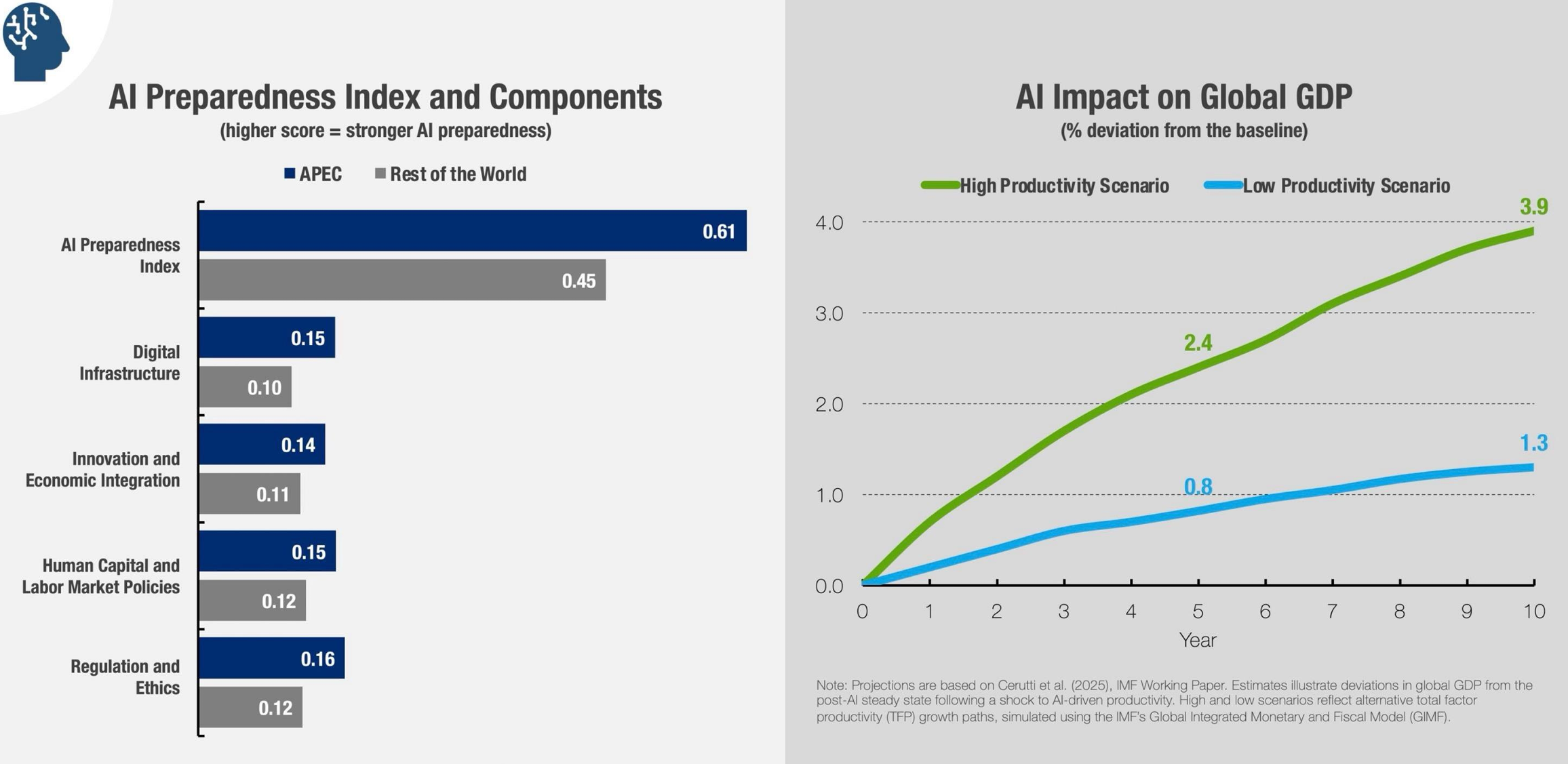
APEC’s advancing Al readiness positions the region to leverage digital innovation for productivity gains, contingent on supportive policy frameworks.
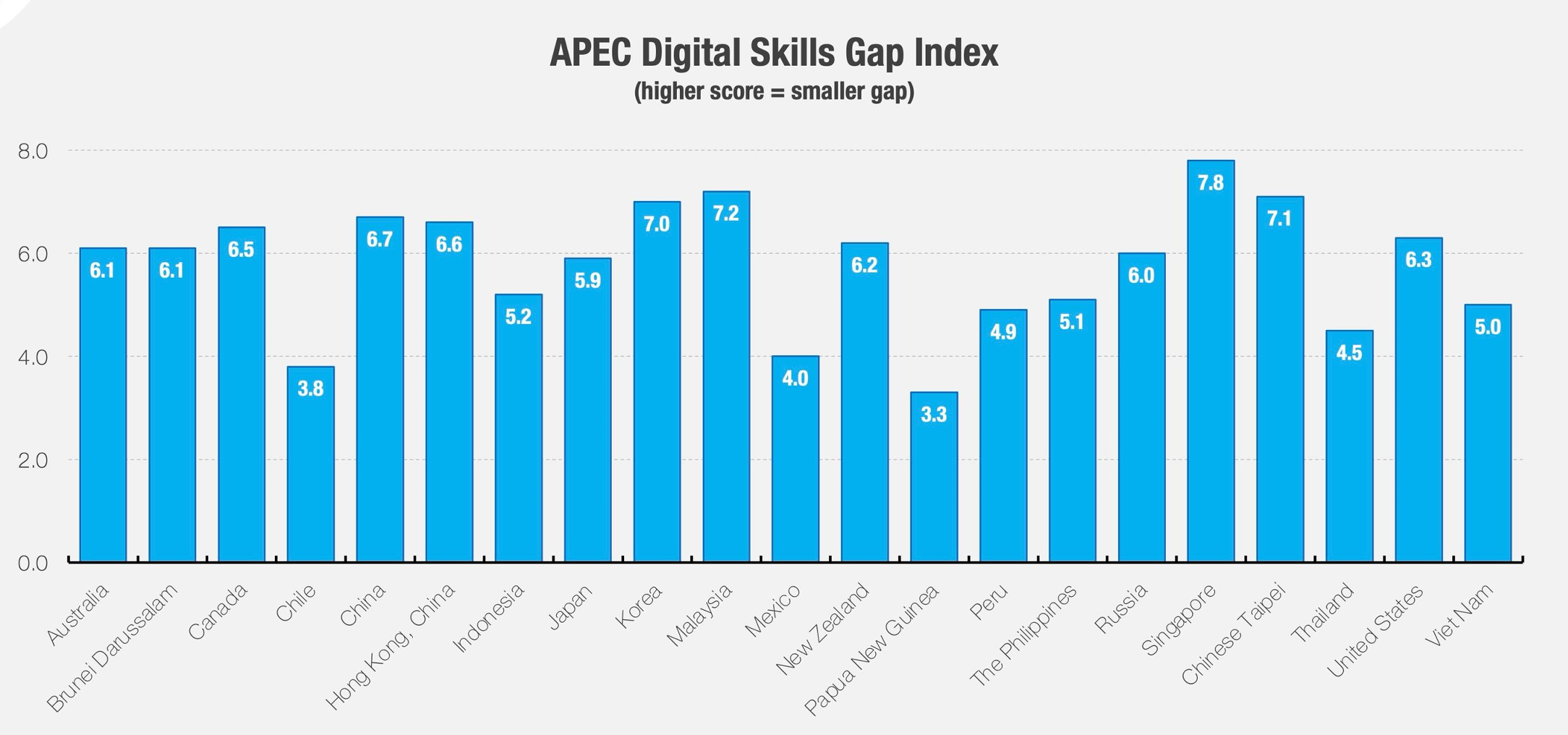
Closing digital skills gaps is critical to fully unlock Al's economic potential and ensure inclusive, productivity-led growth.
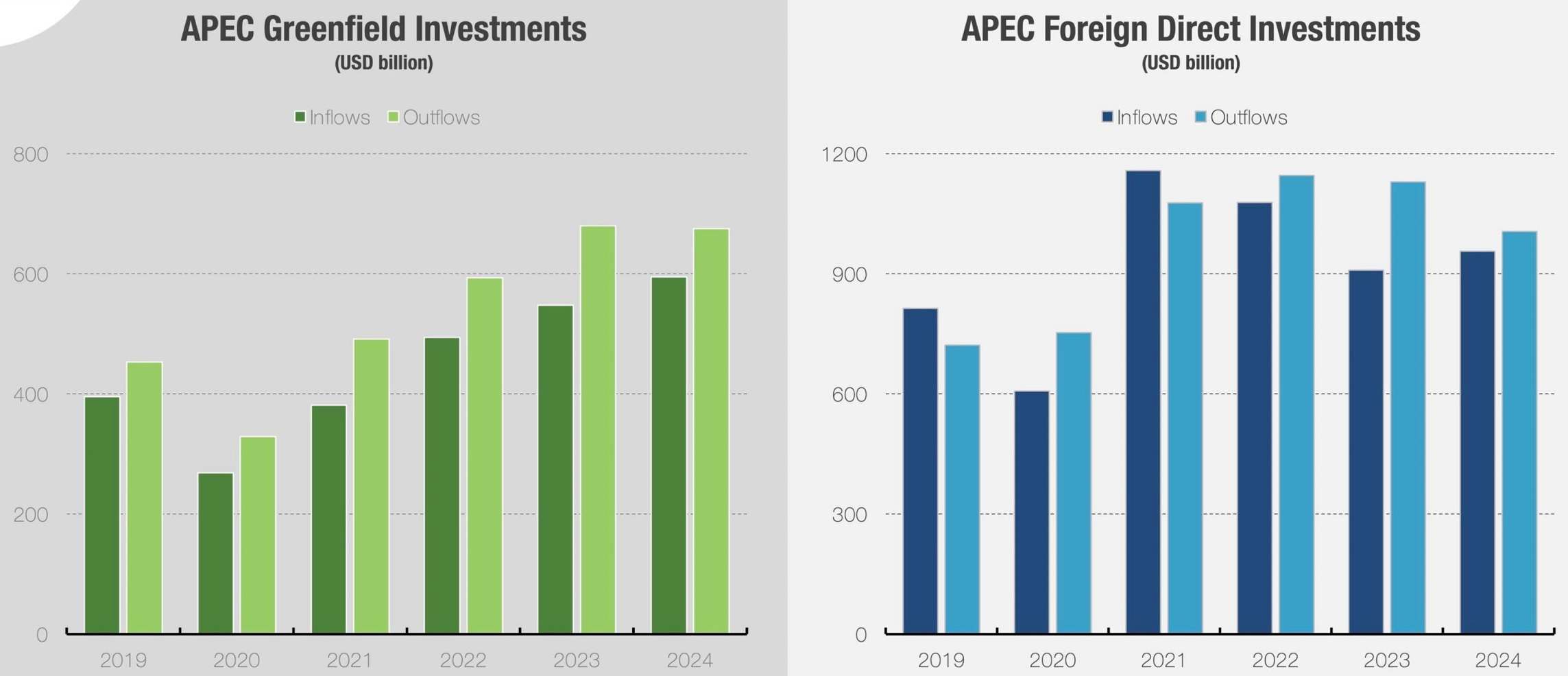
Greenfield investments in APEC steadily rise even as overall investment flows decline amid shifting policies.
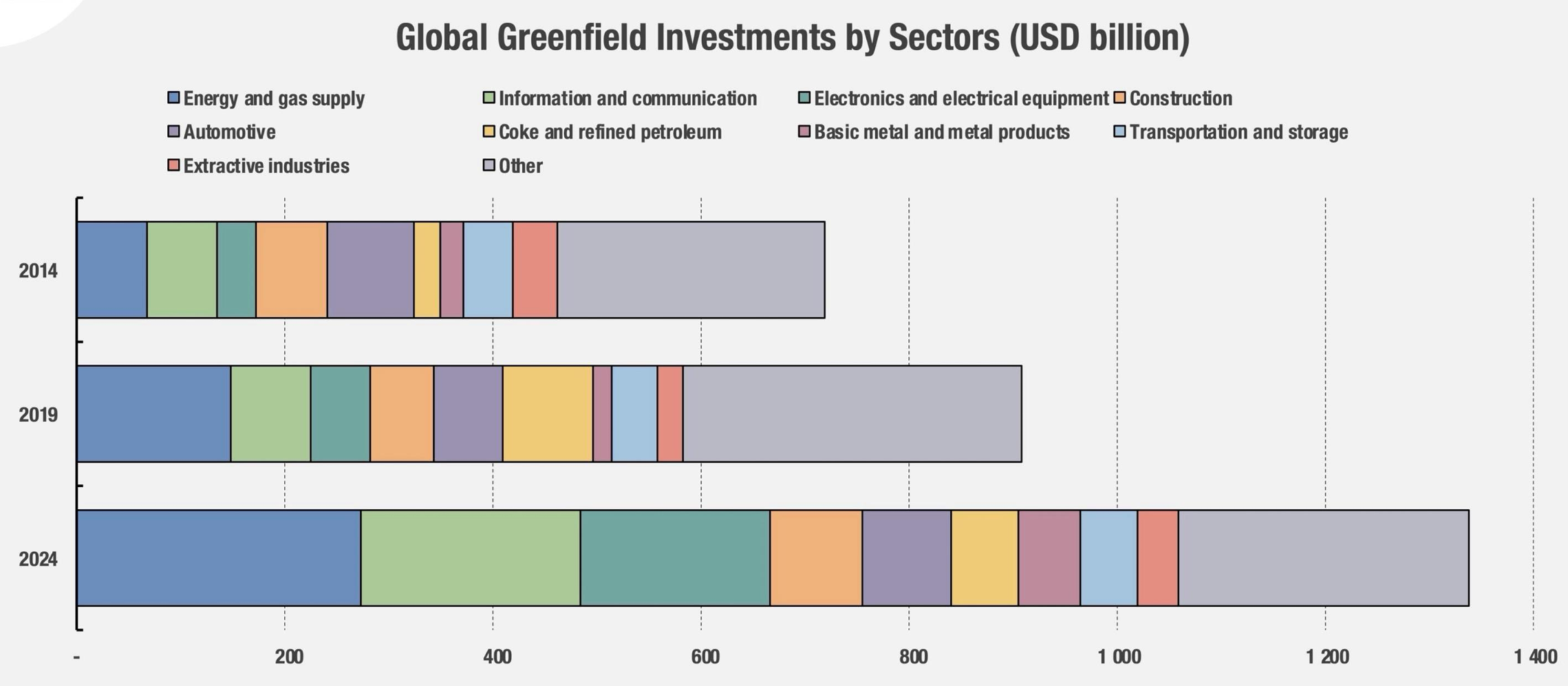
Sustained investments into digital and electronics highlight a firm shift toward productivity-enhancing sectors.
Policy Priorities: Strengthening Confidence, Harnessing Digital Gains
ADAPTIVE ECONOMIC POLICIES
Maintain flexible macroeconomic frameworks that adapt to changing conditions, rebuild fiscal buffers to better respond to shocks, and support productivity-enhancing sectors.
INCLUSIVE STRUCTURAL REFORM
Accelerate labor market reforms and digital upskilling to strengthen human capital and ensure broad access to AI-driven productivity gains.
COORDINATED REGIONAL COOPERATION
Leverage APEC’s platform as a regional forum for dialogue and cooperation on trade and investment, coordinate policy responses to global shifts, and strengthen economic stability.
Asia-Pacific Economic Cooperation (APEC) was established in 1989. The 21 member economies are Australia; Brunei Darussalam; Canada; Chile; China; Hong Kong, China; Indonesia; Japan; Korea; Malaysia; Mexico; New Zealand; Papua New Guinea; Peru; the Philippines; Russia; Singapore; Chinese Taipei; Thailand; the United States; and Viet Nam.
APEC Policy Support Unit (PSU) was set up in 2008 as the policy research and analysis arm for APEC. It supports APEC members and fora in improving the quality of their deliberations and decisions and promoting policies that support the achievement of APEC’s goals by providing objective and high quality research, analytical capacity, and policy support capability.
APEC Regional Trends Analysis (ARTA) is a serial publication of the PSU which provides an overview of the region’s economy through an analysis of recent macroeconomic, trade and investment trends. It tracks recent trade and investment measures implemented around the region, and discusses risks and opportunities to the region’s economic outlook.
This report was prepared by Rhea C. Hernando and Glacer Niño A. Vasquez, Analyst and Researcher, respectively, at the PSU. The views expressed in the APEC Regional Trends Analysis are those of the authors and do not necessarily represent those of the APEC Member Economies. This work is licensed under the Creative Commons Attribution-NonCommercial-ShareAlike 4.0 International License. To view a copy of this license, visit https://creativecommons.org/licenses/by-nc-sa/4.0/deed.en.